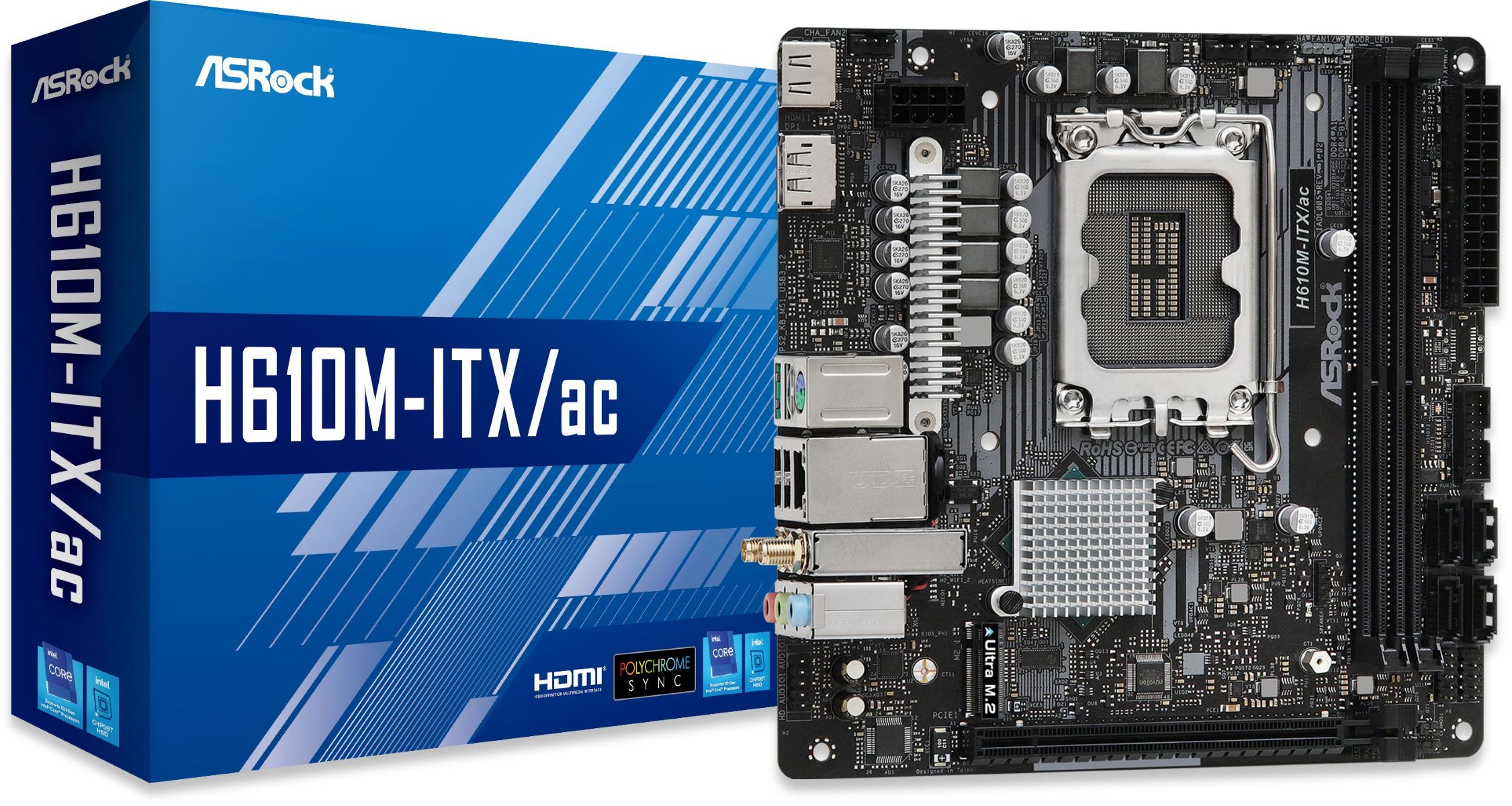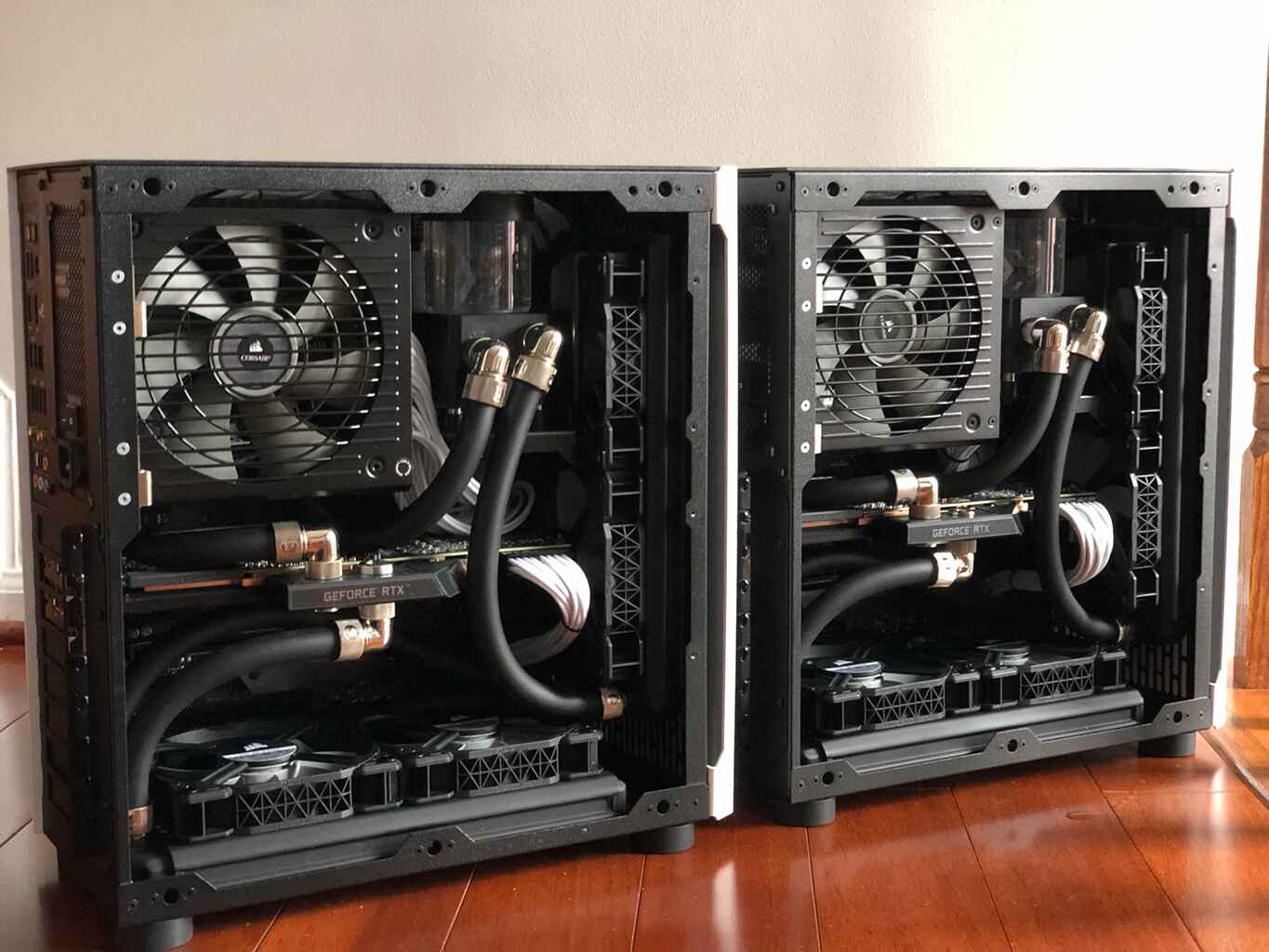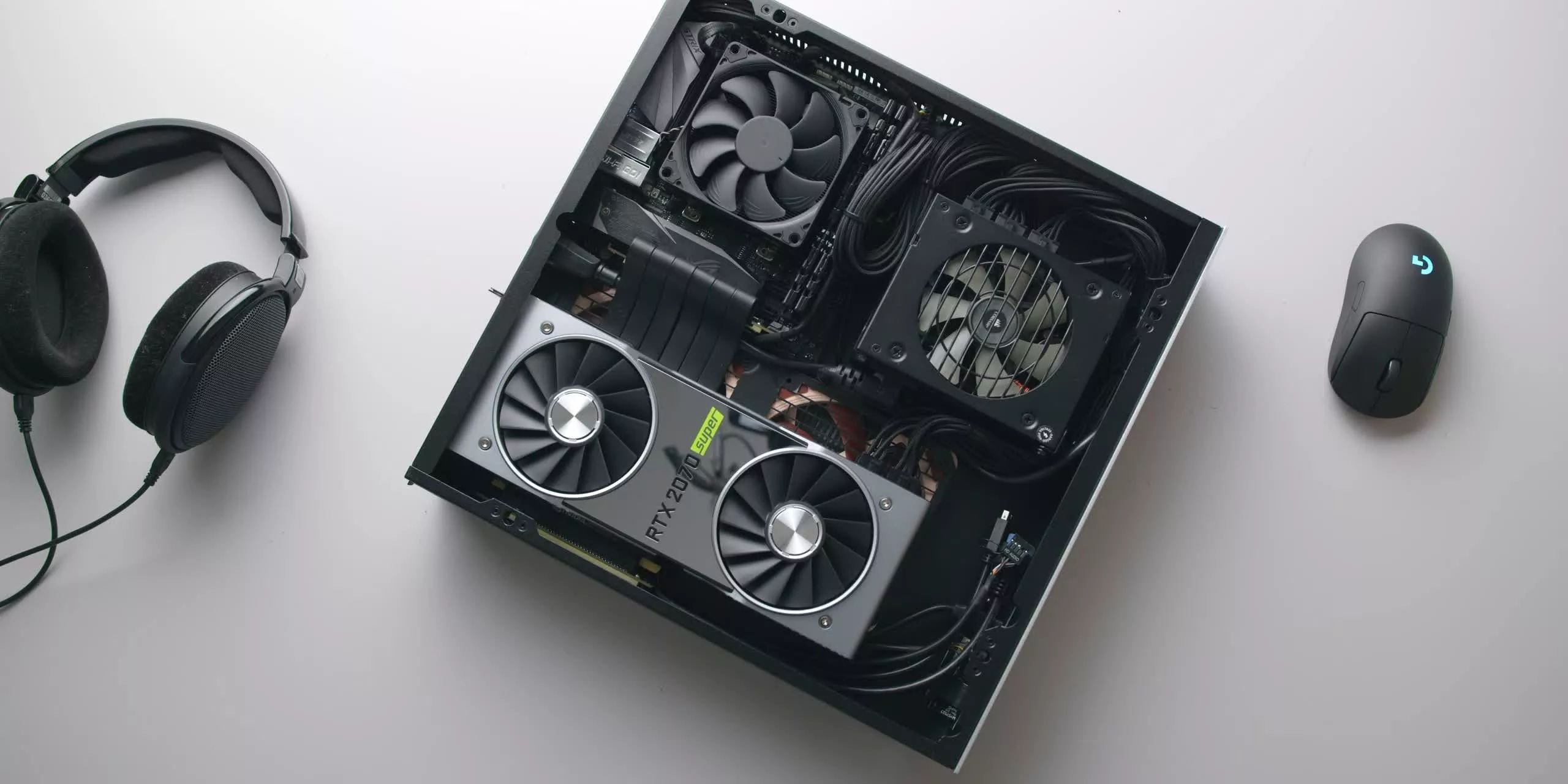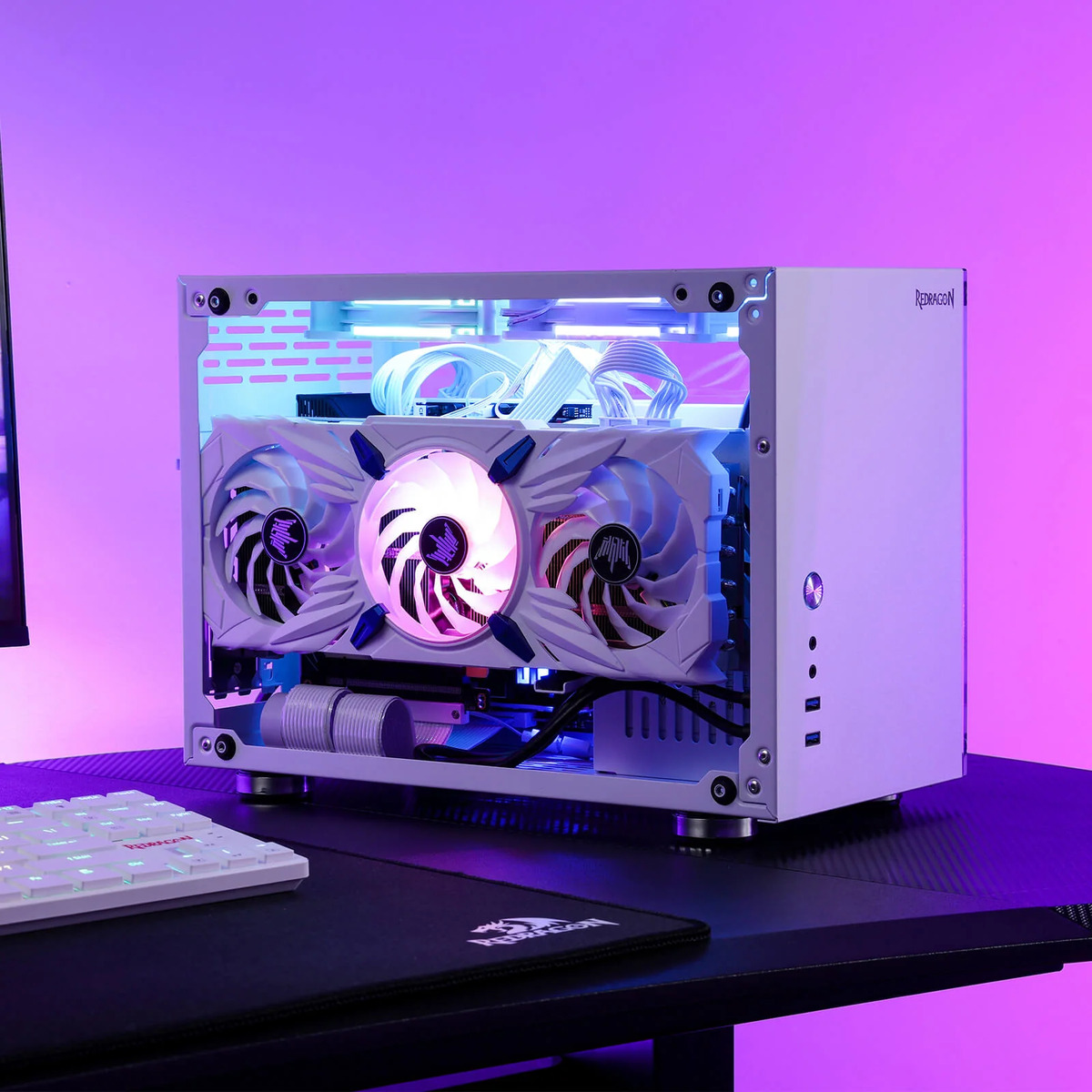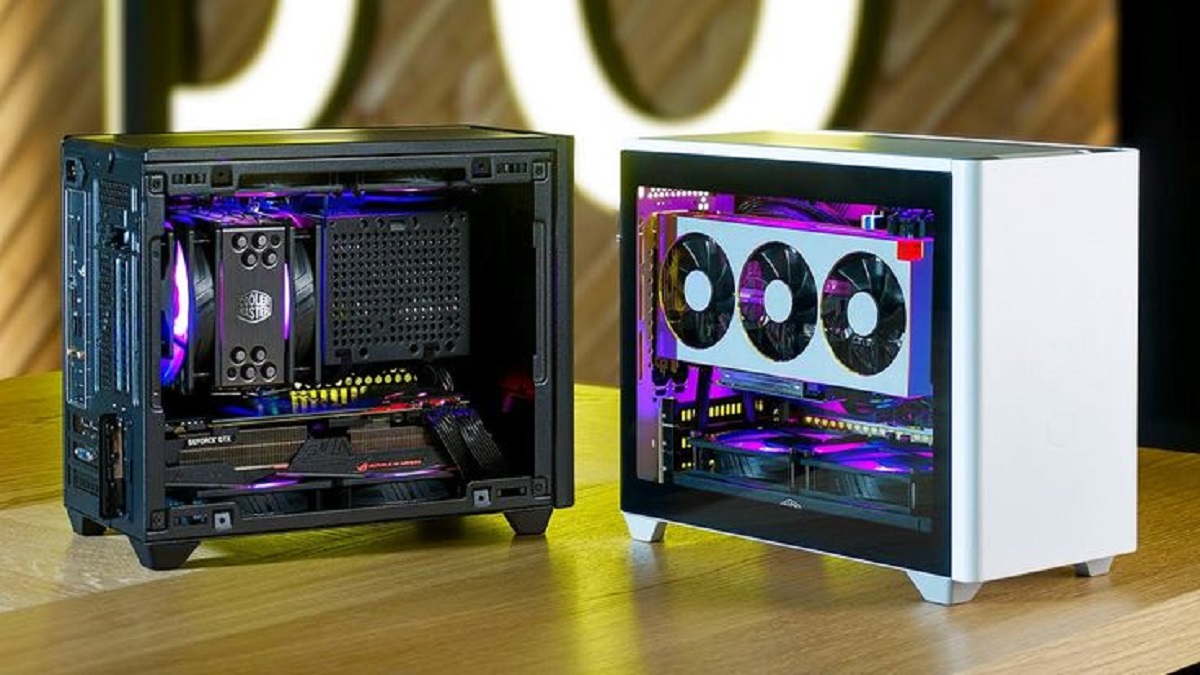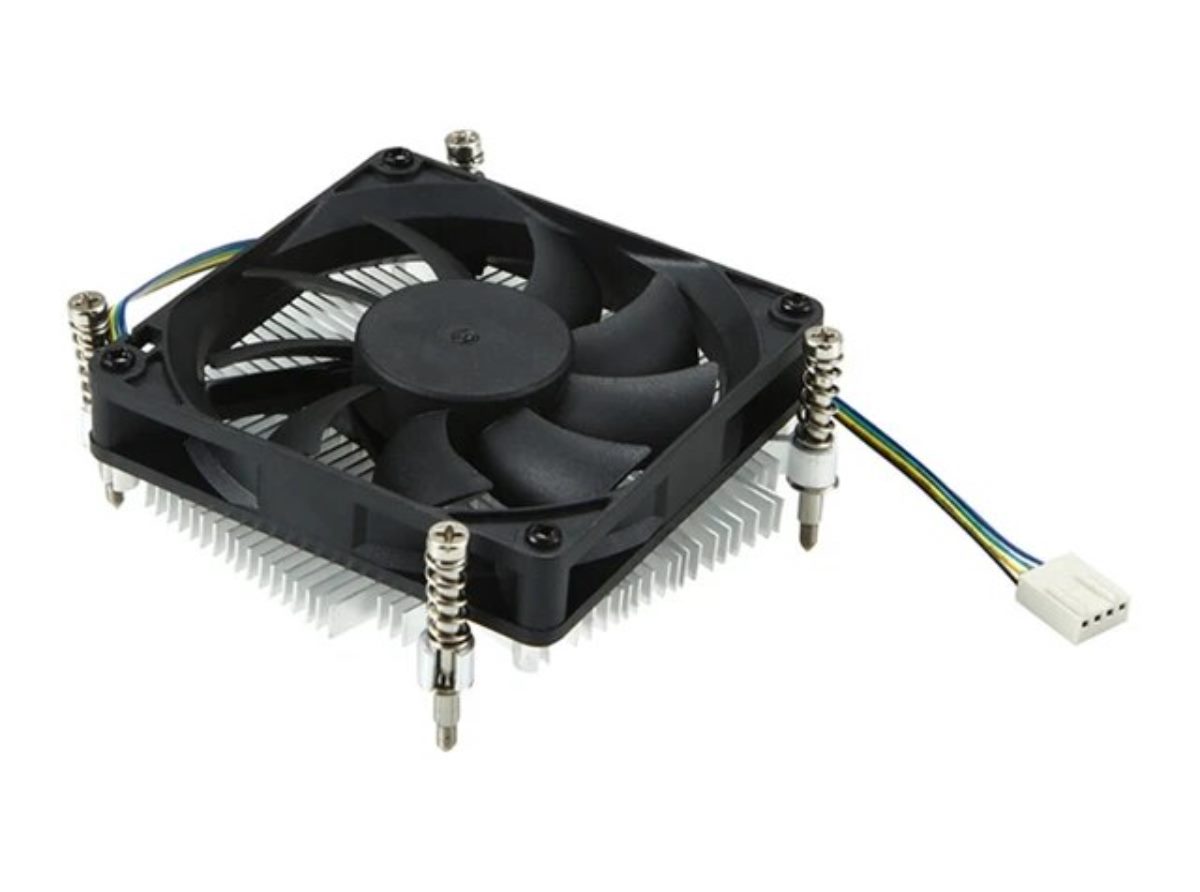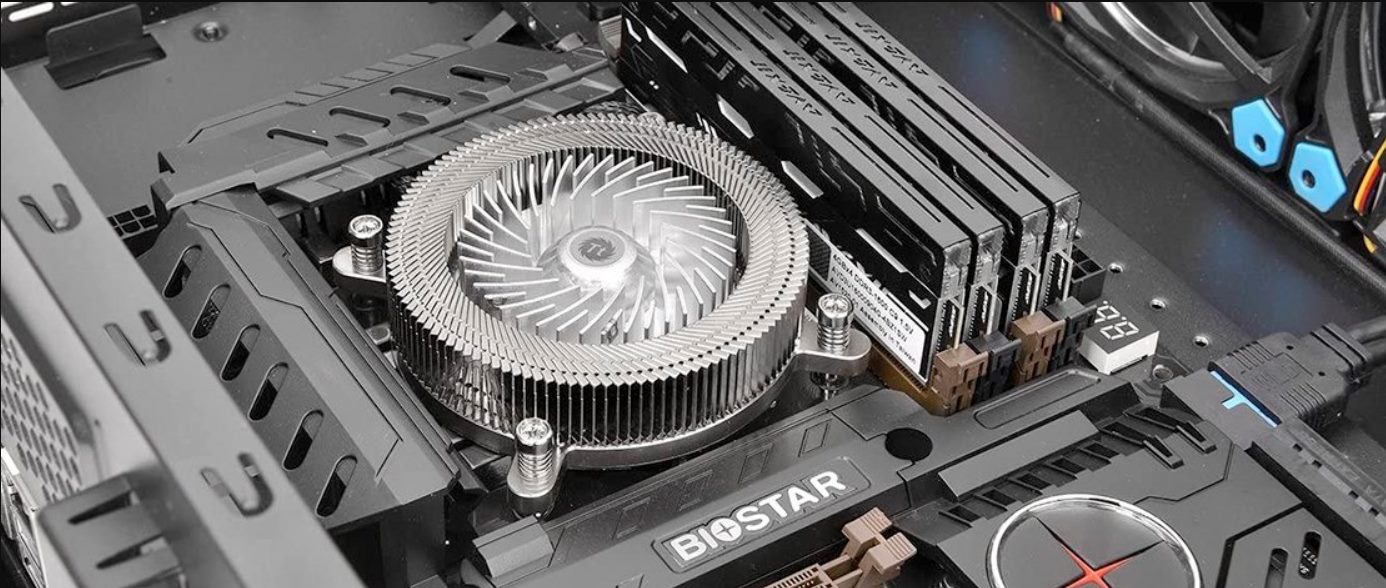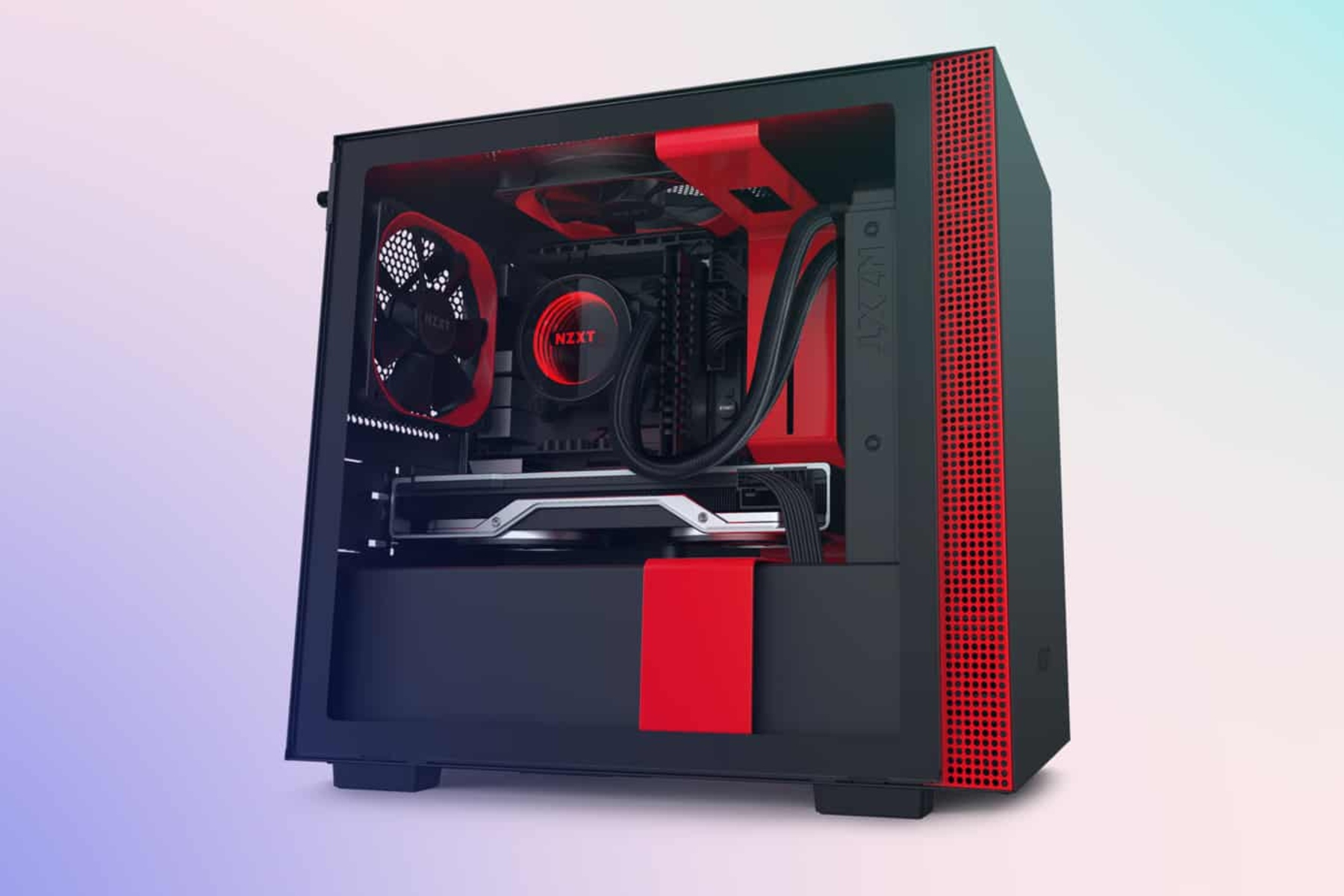Introduction
Welcome to the world of ITX motherboards! If you’re a computer enthusiast or looking to build a compact and powerful system, then understanding what an ITX motherboard is and its advantages and disadvantages is essential. In this article, we will explore the exciting world of ITX motherboards, discuss the factors to consider when choosing one, highlight popular brands, and delve into common uses for these compact yet powerful motherboards.
ITX, which stands for “Mini-ITX,” is a form factor for motherboards that prioritizes small size without compromising functionality. ITX motherboards are designed to fit into small cases while offering a range of features, making them ideal for compact gaming systems, HTPCs (Home Theater PCs), and other space-constrained environments.
Despite their small size, ITX motherboards provide a surprising amount of power. They are compatible with a wide range of processors, including high-performance options from Intel and AMD. Additionally, ITX motherboards offer support for ample RAM, multiple storage drives, and expansion slots, providing flexibility for different hardware configurations.
One of the key advantages of ITX motherboards is their compact form factor. Their small size allows for easier transportation and takes up less space on your desk or in your entertainment center. This makes ITX motherboards perfect for gamers who frequently attend LAN parties or for those who want to maximize space in their living room.
Another advantage of ITX motherboards is their power efficiency. The smaller size often translates to lower power consumption, which can lead to reduced electricity costs and a decreased environmental footprint. Additionally, the compact design can allow for improved airflow, resulting in cooler operating temperatures and potentially quieter systems.
On the flip side, there are also a few disadvantages to consider when choosing an ITX motherboard. Due to their smaller size, ITX motherboards usually have limited expansion options compared to larger form factors like ATX or micro-ATX. This means fewer RAM slots, fewer PCIe slots for additional graphics cards or other expansion devices, and potentially limited connectivity options.
Despite these limitations, advances in technology and engineering have made ITX motherboards more versatile and capable than ever before. With the right components and careful planning, you can build a powerful and compact system that meets your specific needs.
In the next sections, we will explore the factors to consider when choosing an ITX motherboard, highlight popular brands in the market, and discuss common uses for these compact yet powerful motherboards. So, let’s dive in and unlock the potential of ITX motherboards!
What is an ITX Motherboard?
An ITX motherboard, also known as a Mini-ITX motherboard, is a compact form factor motherboard designed to fit into small cases. It is smaller than traditional motherboards, such as ATX or micro-ATX, but still offers a wide range of features and capabilities.
The Mini-ITX form factor was introduced by VIA Technologies in 2001, and since then, it has gained popularity among computer enthusiasts and system builders who value space-saving designs and portability. With a size of approximately 6.7 x 6.7 inches (17 x 17 cm), ITX motherboards are incredibly compact, making them suitable for a variety of applications.
Despite their small size, ITX motherboards retain many of the features found in larger form factor motherboards. They typically have a CPU socket, RAM slots, PCIe slots, storage connectors (SATA or M.2), USB ports, audio ports, and networking capabilities. Some motherboards even offer integrated Wi-Fi and Bluetooth functionality.
ITX motherboards are compatible with a wide range of processors, including those from Intel and AMD. This allows users to build powerful systems based on their preferred CPU brand and specifications. Additionally, these motherboards support various RAM configurations, enabling users to maximize their system’s performance by adding ample memory.
One of the key features of ITX motherboards is their ability to support PCIe slots. While the number of PCIe slots on an ITX motherboard is typically limited compared to larger form factors, it is still possible to install a high-performance graphics card or other expansion cards, such as sound cards or networking cards.
In terms of storage options, ITX motherboards offer multiple connectors for SATA drives or M.2 SSDs. This allows users to install multiple storage devices, providing ample capacity for storing games, applications, and media files.
Connectivity options on ITX motherboards may vary, but they typically include USB ports (both Type-A and Type-C), audio jacks, and Ethernet ports. Some motherboards even include HDMI or DisplayPort outputs to facilitate connections to external displays.
Overall, ITX motherboards are a perfect solution for those who prioritize compactness and portability without compromising performance. They are ideal for building compact gaming systems, home theater PCs, small office setups, or any other application where saving space is crucial.
In the next sections, we will discuss the advantages and disadvantages of ITX motherboards, the factors to consider when choosing one, popular brands in the market, and common uses for these compact yet powerful motherboards. So, let’s dive in and explore the world of ITX motherboards!
Advantages of ITX Motherboards
ITX motherboards offer several advantages that make them an attractive choice for computer enthusiasts and system builders who prioritize compactness and versatility. Let’s explore some of the key advantages of ITX motherboards:
- Small Form Factor: The compact size of ITX motherboards is their biggest advantage. With dimensions around 6.7 x 6.7 inches (17 x 17 cm), these motherboards can fit into smaller cases, making them perfect for space-constrained environments. Whether you’re building a small form factor gaming PC or a compact HTPC for your living room, ITX motherboards provide an excellent solution.
- Portability: Due to their small size, ITX motherboards are highly portable. They are easy to transport and set up, making them ideal for gamers who frequently attend LAN parties or for individuals who need to move their system between different locations. With an ITX motherboard-based system, you can enjoy high-performance computing power wherever you go.
- Power Efficiency: ITX motherboards often have lower power consumption compared to larger form factor motherboards. The compact design allows for more efficient use of power, resulting in reduced electricity costs and a reduced environmental footprint. Additionally, the smaller size can facilitate improved airflow within the system, leading to cooler operating temperatures and potentially quieter systems.
- Compatibility: Despite their small size, ITX motherboards are compatible with a wide range of processors, including high-performance options from Intel and AMD. This allows users to build powerful systems based on their preferred CPU brand and specifications. ITX motherboards also offer support for ample RAM, multiple storage drives, and expansion slots, providing flexibility for different hardware configurations.
- Cost-effective: ITX motherboards are often more affordable than their larger counterparts, such as ATX or micro-ATX motherboards. They require fewer materials to manufacture due to their compact size, which can result in cost savings passed on to the consumers. Additionally, their smaller form factor can lead to more affordable cases and other components that are specifically designed for ITX systems.
- Reduced Cable Clutter: The smaller size of ITX motherboards also means that there are fewer connectors and cables required to connect components. This can result in a cleaner and more organized system build, with fewer cables obstructing airflow and overall aesthetics.
These advantages make ITX motherboards an excellent choice for those who prioritize space-saving designs, portability, and performance. Whether you’re building a compact gaming system, a home theater PC, or a small office setup, ITX motherboards offer the perfect combination of power and convenience.
In the next sections, we will discuss the disadvantages of ITX motherboards, the factors to consider when choosing one, popular brands in the market, and common uses for these compact yet powerful motherboards. So, let’s continue our exploration of ITX motherboards!
Disadvantages of ITX Motherboards
While ITX motherboards offer many advantages, they also come with a few limitations that potential buyers should consider. Here are some of the key disadvantages of ITX motherboards:
- Limited Expansion Slots: One of the main drawbacks of ITX motherboards is their limited number of expansion slots. Due to their compact size, ITX motherboards generally feature only one PCIe slot, which can restrict the ability to add additional graphics cards, sound cards, or other expansion devices. This limited expandability may not be suitable for users who require multiple expansion options.
- Fewer RAM Slots: ITX motherboards typically come with fewer RAM slots compared to larger motherboards. Most ITX boards feature only two RAM slots, limiting the maximum RAM capacity of the system. This can be a consideration for users who require extensive multitasking or running memory-intensive applications.
- Less Cooling Potential: The smaller form factor of ITX motherboards can restrict cooling potential compared to larger motherboards. The limited space for cooling solutions, such as CPU coolers and case fans, can result in higher operating temperatures and potentially louder fan noise. It is crucial to carefully select cooling components and ensure proper airflow to avoid overheating issues in an ITX system.
- Complex Cable Management: Due to the small size of ITX motherboards, cable management can be more challenging compared to larger form factors. With limited space to route and hide cables, it may require extra effort and planning to achieve a clean and organized cable setup. Proper cable management is essential for ensuring optimal airflow and preventing cable interference with other components.
- Higher Component Prices: ITX-compatible components, such as compact cases and power supplies, can often come at a premium price compared to their larger counterparts. The specialized design and smaller market demand for ITX components can drive up the cost of building a system with an ITX motherboard. This factor can be a consideration for users on a tight budget.
While these disadvantages may pose challenges for some users, advances in ITX motherboard technology have mitigated many of these limitations, offering more versatility and expandability than ever before. With careful planning and component selection, it is possible to overcome these drawbacks and build a powerful and compact ITX system.
In the next sections, we will discuss the factors to consider when choosing an ITX motherboard, popular brands in the market, and common uses for these compact yet powerful motherboards. So, let’s move forward to gain a comprehensive understanding of ITX motherboards!
Factors to Consider When Choosing an ITX Motherboard
Choosing the right ITX motherboard for your build requires careful consideration of several factors. While performance and compatibility are essential, there are other aspects to keep in mind. Here are some of the key factors to consider when selecting an ITX motherboard:
- Processor Compatibility: Ensure that the ITX motherboard you choose is compatible with your preferred processor brand and model. Check the socket type and supported CPU generation to ensure a seamless match. Whether you opt for Intel or AMD, make sure the motherboard’s chipset and socket are suitable for your chosen processor.
- RAM Capacity and Slots: Consider your memory requirements and whether the motherboard has enough RAM slots to fulfill them. Most ITX motherboards feature two RAM slots, so ensure they support the memory type and capacity you need. Take note of the maximum supported RAM speed as well if you plan to use high-performance memory modules.
- Expansion Options: Determine the number of expansion slots you need for your build. ITX motherboards typically offer a single PCIe slot, so consider if this is sufficient for your requirements. Think about whether you need additional slots for graphics cards, sound cards, or other expansion devices. Also, consider the number and type of storage connectors, such as SATA ports or M.2 slots, to accommodate your storage needs.
- Connectivity: Evaluate the motherboard’s connectivity options, including USB ports, audio jacks, and networking capabilities. Consider the number and type of USB ports (both Type-A and Type-C) and audio ports to ensure compatibility with your devices. If integrated Wi-Fi or Bluetooth connectivity is important to you, look for models that have these features.
- Power Delivery: Pay attention to the power delivery system of the motherboard. Look for models with robust power delivery components, such as quality VRMs (Voltage Regulator Modules), which ensure stable power delivery to the CPU and other components. This is especially important if you plan to overclock your system or use power-hungry components.
- BIOS Features: Evaluate the motherboard’s BIOS (Basic Input/Output System) features and options. A well-designed and user-friendly BIOS can make system setup and configuration easier. Look for features such as dual BIOS, overclocking support, and convenient overclocking presets if you plan to tinker with system settings.
- Brand Reputation: Consider the reputation and reliability of the motherboard manufacturer. Opt for trusted and reputable brands that have a track record of producing high-quality motherboards with excellent customer support. Research customer reviews and professional evaluations to get an idea of the brand’s reputation.
- Price and Budget: Determine your budget and select an ITX motherboard that provides the right balance between features and cost. Compare prices and specifications from different manufacturers to find the best value for your needs.
By taking these factors into account, you can choose the best ITX motherboard that meets your requirements and aligns with your intended use for the system.
In the next sections, we will discuss popular brands in the ITX motherboard market, as well as common uses for these compact yet powerful motherboards. So, let’s continue exploring the world of ITX motherboards!
Popular ITX Motherboard Brands
When it comes to ITX motherboards, several brands stand out for their quality, performance, and reputation. These brands have a strong presence in the market and offer a range of options to cater to diverse user needs. Let’s take a look at some of the popular ITX motherboard brands:
- ASUS: Known for their reliability and innovation, ASUS has a wide range of ITX motherboards that cater to different budgets and requirements. Their motherboards usually feature high-quality components, robust power delivery systems, and a user-friendly BIOS interface. ASUS also offers premium models for enthusiasts and gamers with additional features like enhanced audio, overclocking support, and built-in Wi-Fi.
- GIGABYTE: GIGABYTE is another well-established brand that offers a diverse selection of ITX motherboards. They are known for their durability, excellent performance, and competitive pricing. GIGABYTE motherboards often feature advanced power delivery systems, comprehensive connectivity options, and convenient BIOS interfaces. They offer a range of models suitable for gaming, multimedia, and general computing purposes.
- MSI: MSI is a renowned brand for gaming-oriented motherboards, and their ITX offerings are no exception. MSI ITX motherboards usually feature sleek designs, high-quality components, and robust power delivery systems for efficient performance. They offer features like customizable RGB lighting, enhanced audio, and dedicated gaming features, making them popular among gamers looking to build compact gaming systems.
- ASRock: ASRock has gained a significant reputation for their value-oriented ITX motherboards. They offer a range of models that provide a balance between affordability and performance. While their motherboards may not have all the premium features found in higher-end options, ASRock focuses on delivering solid performance, reliable build quality, and good value for the price. They are a popular choice for budget-conscious builders.
- EVGA: EVGA is a well-known brand in the graphics card market, but they also produce quality ITX motherboards. Their ITX offerings often prioritize overclocking capabilities, high-quality components, and reliable power delivery. EVGA motherboards may have a narrower range of options compared to other brands, but they are highly regarded for their performance and attention to detail, especially among enthusiasts and overclockers.
These are just a few examples of popular ITX motherboard brands, but there are other reputable manufacturers as well. When choosing a brand, consider factors such as your budget, desired features, and the reputation of the brand for delivering reliable and high-performance motherboards.
In the next section, we will explore common uses for ITX motherboards and the applications where they shine. So, let’s continue our journey through the world of ITX motherboards!
Common Uses for ITX Motherboards
ITX motherboards are versatile and suitable for various applications. Their compact size and feature-rich design make them ideal for specific use cases where space-saving and portability are essential. Let’s explore some of the common uses for ITX motherboards:
- Compact Gaming Systems: ITX motherboards are a popular choice for building compact gaming systems. Their small form factor allows gamers to create powerful rigs without the need for a large and cumbersome case. Paired with a high-performance CPU, graphics card, and sufficient memory, ITX motherboards can deliver excellent gaming performance while taking up minimal space.
- Home Theater PCs (HTPCs): ITX motherboards are well-suited for creating HTPCs, which are dedicated multimedia systems for home entertainment. Their small size allows HTPCs to fit seamlessly into entertainment centers or living room setups without occupying excessive space. With the right ITX motherboard, HTPCs can support high-definition video playback, streaming services, and even advanced audio capabilities.
- Portable LAN Party Systems: For gamers who frequently attend LAN parties or gaming events, ITX motherboards provide the perfect foundation for portable gaming systems. The compact size of ITX systems makes them easy to transport, allowing gamers to enjoy their favorite games with friends without the hassle of lugging around a large and heavy PC tower.
- Small Office/Home Office (SOHO) Setups: ITX motherboards find applications in small office or home office environments where limited space is a consideration. These motherboards can power productivity-focused systems with efficient processors, ample memory, and fast storage options. The small form factor makes them suitable for limited desk space, allowing users to create functional workstations without sacrificing performance.
- Media Server/NAS: ITX motherboards can be used to build media servers or network-attached storage (NAS) systems. With their support for multiple storage drives, ITX systems can provide ample storage capacity for media files, backups, and collaborative work. The compact size of the ITX motherboard allows users to build a dedicated media server or NAS without the need for excessive space requirements.
- Embedded Systems: ITX motherboards are also utilized in various embedded systems and specialized applications. Their small size and multiple connectivity options make them suitable for use in kiosks, digital signage, automation, surveillance systems, and other similar applications. Embedded ITX systems are ideal for situations where compactness, low power consumption, and reliable performance are critical.
These are just a few examples of the common uses for ITX motherboards. Their versatility, power efficiency, and space-saving design make them a preferred choice for various applications, both in professional and recreational settings.
In the next section, we will wrap up our exploration of ITX motherboards with a summary of the key points discussed. So, let’s move on to our concluding remarks!
Conclusion
ITX motherboards have revolutionized the world of compact computing by offering powerful performance in a small form factor. These motherboards are highly versatile, making them suitable for a range of applications where space-saving, portability, and efficiency are key considerations.
In this article, we explored what ITX motherboards are and discussed their advantages and disadvantages. We also examined the factors to consider when choosing an ITX motherboard, highlighting important considerations such as processor compatibility, RAM capacity, expansion options, connectivity, and brand reputation.
Popular ITX motherboard brands like ASUS, GIGABYTE, MSI, ASRock, and EVGA offer a wide selection of models to cater to different budgets and requirements. These brands have established themselves as leaders in the market, known for their reliability, performance, and innovative features.
We also explored common uses for ITX motherboards, including building compact gaming systems, home theater PCs (HTPCs), portable LAN party systems, small office/home office (SOHO) setups, media servers/NAS, and embedded systems. ITX motherboards provide the foundation for creating powerful, functional, and space-efficient systems in these various applications.
Ultimately, the choice of an ITX motherboard depends on your specific needs, preferences, and budget. Considering factors such as processor compatibility, expansion options, connectivity, power delivery, and brand reputation will help you make an informed decision.
Whether you’re a gaming enthusiast, a multimedia aficionado, or a professional in need of a compact and efficient system, ITX motherboards offer the perfect combination of size, power, and versatility.
We hope this article has provided valuable insights into the world of ITX motherboards and helped you understand their benefits and considerations. Now, armed with this knowledge, you can confidently embark on your journey to build your own ITX system.







